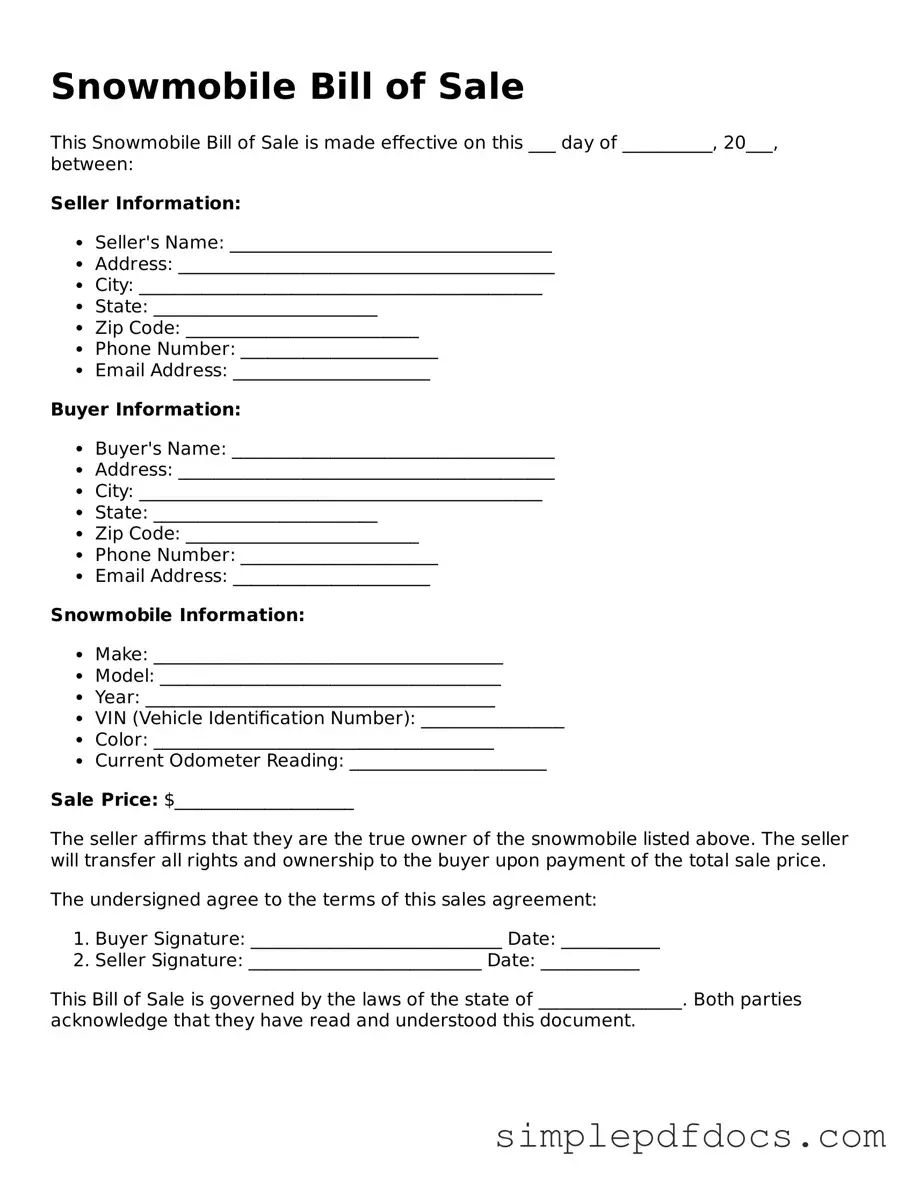Attorney-Approved Snowmobile Bill of Sale Form
A Snowmobile Bill of Sale form is a legal document that records the transfer of ownership of a snowmobile from one party to another. This form serves as proof of the transaction and outlines important details such as the sale price, vehicle identification number (VIN), and the names of both the buyer and seller. Having a properly completed bill of sale can help protect both parties in the event of future disputes.
Get Document Here
